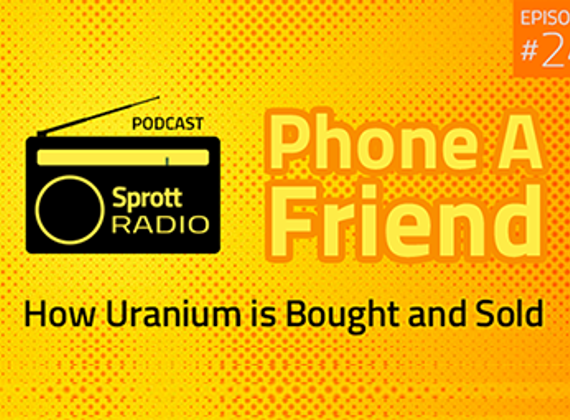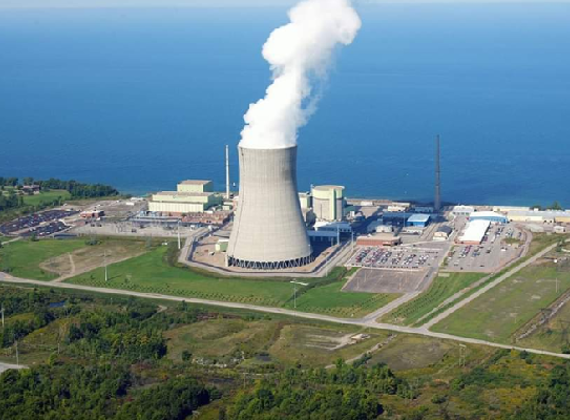Insights
Sprott Insights offers unique analyses and perspectives from the firm’s leading experts on key topics in precious metals and critical materials.

Interview
Uranium Market Outlook 2024
Per Jander and James Connor discuss the uranium market, highlighting the catalysts for sharp increases in uranium prices in 2023, including increased utility and producer activity, production shortfalls from major players like Cameco and Orano, and geopolitical uncertainties affecting supply. Per Jander expresses optimism for the uranium market, emphasizing strong demand, ongoing long-term contracting discussions and potential supply disruptions as factors that could contribute to further price increases in 2024.

Video
How the Uranium Market Works
Per Jander, WMC Technical Advisor to Sprott Physical Uranium Trust, draws upon his years of experience as a uranium trader to reveal how the market works. Who are the buyers and sellers, how is uranium transacted and how will the market evolve moving forward? Per answers these questions and more to give investors a better understanding of the dynamics of the uranium trade.

Sprott Webcast Replay
The Great Power Shift: Uranium, Battery Metals and the Energy Transition
The clean energy transition and worldwide energy security goals are fueling a global power shift. This shift has reignited interest in nuclear power, accelerated electric vehicle (EV) adoption and spurred renewable energy deployment. In this environment, uranium, lithium, copper and other high-demand, short-supply critical minerals are vitally crucial — and potentially attractive as investment opportunities.

Special Uranium Report
Key Facts about Spent Nuclear Fuel
Chemical reactions of fossil-fuel plants release more radiation into the environment than the operation of nuclear energy plants — 10 times more. Most nuclear-industry waste is relatively low in radioactivity, and only a small amount is produced. Estimates put the total waste from a nuclear reactor supplying one person's electricity needs for a year at the size of a standard brick.

Sprott Radio Podcast
Phone A Friend - How Uranium is Bought and Sold
Treva Klingbiel of TradeTech and Per Jander at WMC Energy join Sprott's Ed Coyne to discuss the inner workings of uranium pricing and contracts, the future of nuclear energy generation capacity and the development of SMRs.

Interview
Bloor Street Capital Nuclear and Uranium Conference
John Ciampaglia: “I think it's an interesting time to be investing in uranium — from a fundamental perspective, from an energy policy perspective, from a geopolitical risk perspective….we've experienced a sea change in the level of interest related to uranium, energy transition materials and mining investments.” Bloor Street Capital's Nuclear and Uranium Virtual Conference featured John Ciampaglia, CEO of Sprott Asset Management, and Per Jander, WMC Energy, Director, Nuclear & Renewables.

Special Uranium Report
Why Nuclear Power Plant Life Extensions & Uprates Matter (...SMRs are in Early Stages)
Research and development on small modular nuclear reactors (SMRs) are underway globally and generating tremendous buzz. But SMRs are not likely to contribute meaningful amounts of carbon-free power for another decade. By contrast, nuclear power plant life extensions and uprates hold the power to boost carbon-free electricity production in the interim and provide a bridge to a future date when new SMR technologies will be commercially available.
Important Disclosures
An investor should consider the investment objectives, risks, charges and expenses of each fund carefully before investing. To obtain a fund’s Prospectus, which contains this and other information, contact your financial professional, call 1.888.622.1813 or visit SprottETFs.com. Read the Prospectus carefully before investing.
Exchange Traded Funds (ETFs) are considered to have continuous liquidity because they allow for an individual to trade throughout the day, which may indicate higher transaction costs and result in higher taxes when fund shares are held in a taxable account.
The funds are non-diversified and can invest a greater portion of assets in securities of individual issuers, particularly those in the natural resources and/or precious metals industry, which may experience greater price volatility. Relative to other sectors, natural resources and precious metals investments have higher headline risk and are more sensitive to changes in economic data, political or regulatory events, and underlying commodity price fluctuations. Risks related to extraction, storage and liquidity should also be considered.
Shares are not individually redeemable. Investors buy and sell shares of the funds on a secondary market. Only “authorized participants” may trade directly with the fund, typically in blocks of 10,000 shares.
The Sprott Active Metals & Miners ETF, Sprott Active Gold & Silver Miners ETF and the Sprott Silver Miners & Physical Silver ETF are new and have limited operating history.
Sprott Asset Management USA, Inc. is the Investment Adviser to the Sprott ETFs. ALPS Distributors, Inc. is the Distributor for the Sprott ETFs and is a registered broker-dealer and FINRA Member. ALPS Distributors, Inc. is not affiliated with Sprott Asset Management USA, Inc.
